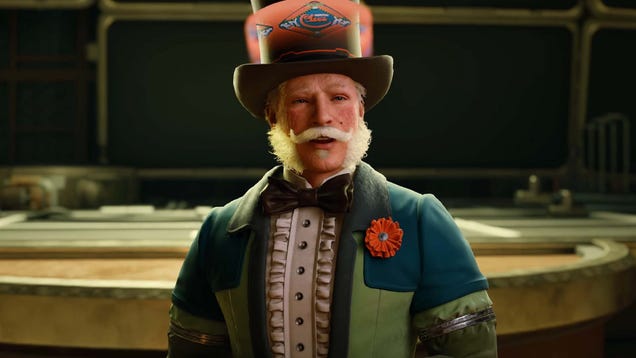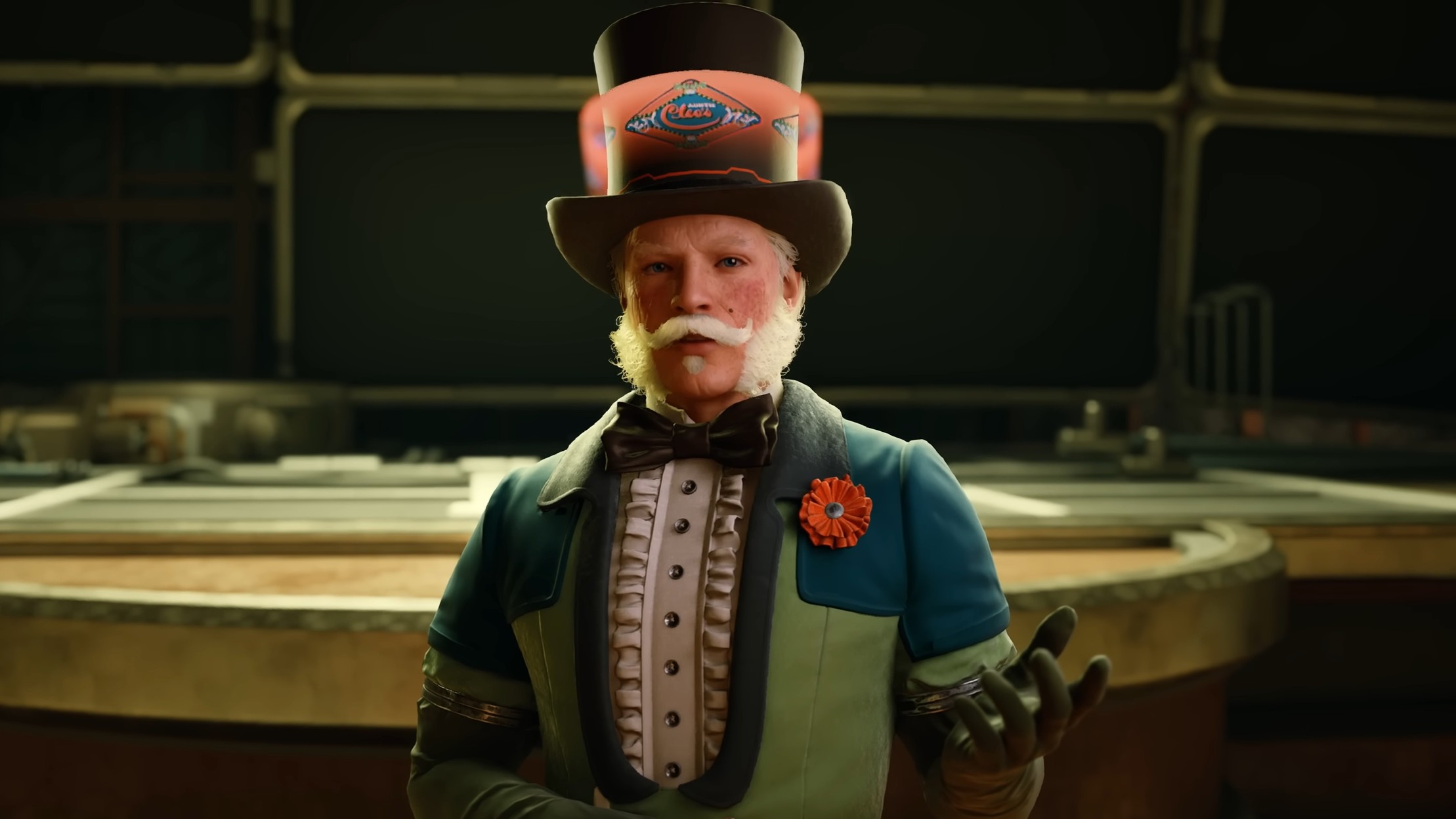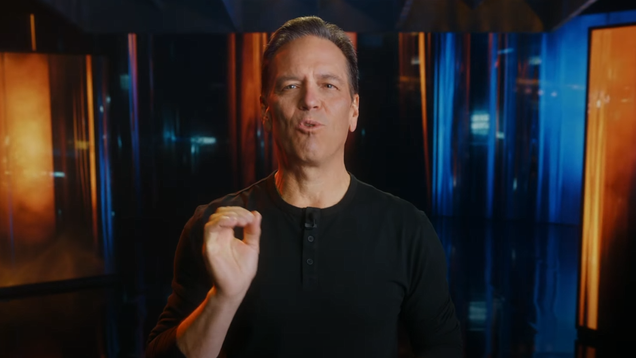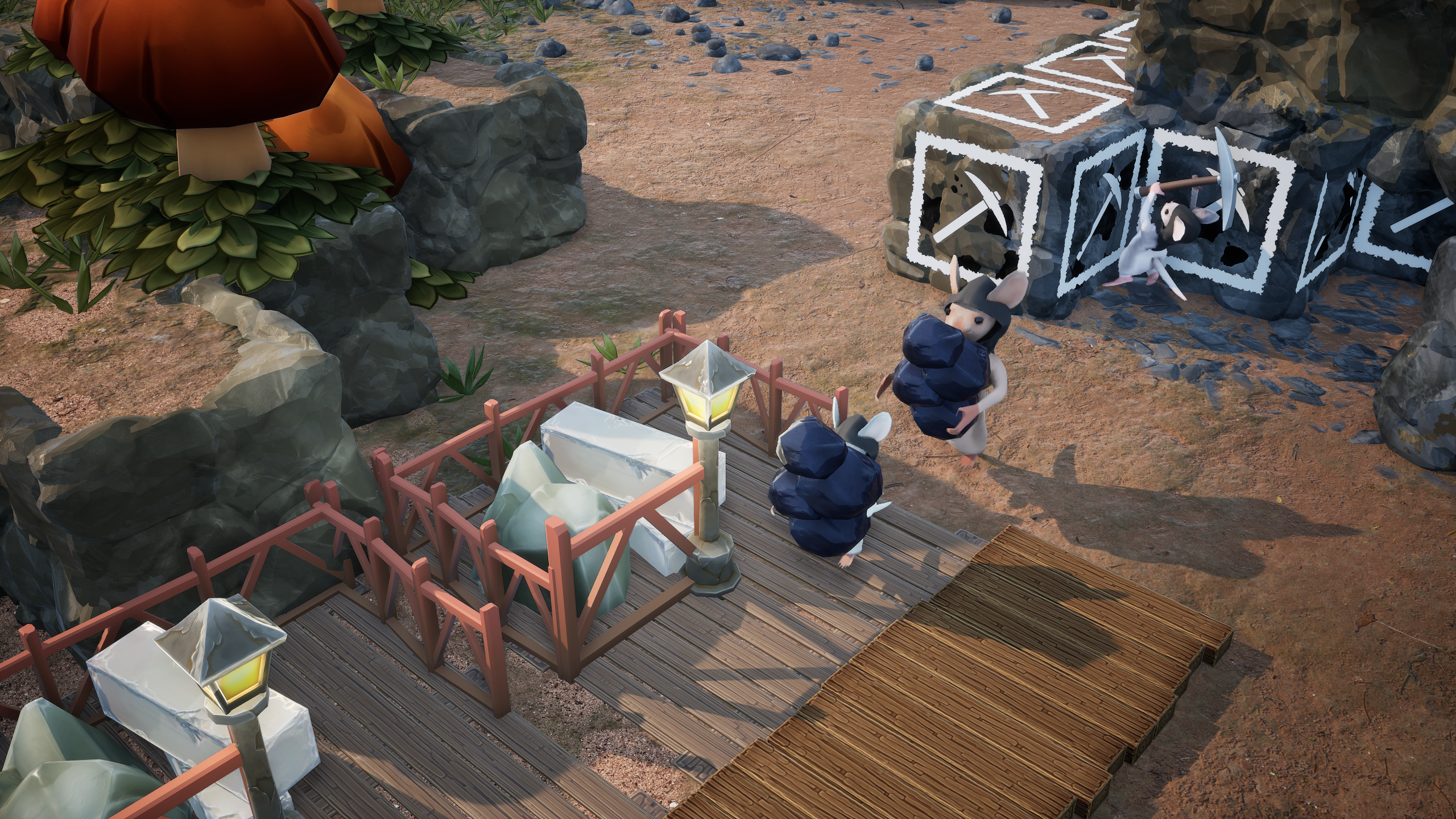
Final Fantasy XVI is less than a year away, but Square Enix has left most of the details to be speculated on by the fans. A recent trailer offered more hints about what to expect, including a hint of what crystals – a Final Fantasy standby – mean for the world. Now Final Fantasy XVI’s development team are delving deeper than ever into their upcoming RPG, opening about topics ranging from persistent comparisons to Game of Thrones to questions about representation for Black characters and other people of color.
For this interview, IGN spoke with director Hiroshi Takai, localization director Michael-Christopher Koji Fox, and creative director Kazutoyo Maehiro, with producer Naoki Yoshida also weighing in for some extended thoughts of his own. They talk about it being the first M-rated game in the series, how sidequests will work, and several other topics. They also open up a bit more about its female protagonist, speculated to be Jill Warrick, and how Clive will interact with his companions.
“While [Final Fantasy XVI] does feature a prominent female protagonist, I would hazard the similarities end there. Celes and Aerith are unique in that so much of their games’ narratives revolve around their own respective stories,” Koji Fox says. “[Final Fantasy XVI’s] story, however, has, since the early concept phase, always been about Clive. But as is the case with all Final Fantasys, Clive’s story is about encounters. It is about companions. It is about relationships and how, through those relationships, Clive grows. No Final Fantasy character worth his or her salt ever saved the world on their own. Luckily, Clive won’t have to try, as he, too, is not alone.
You can find the rest of the interview below, and make sure to check out our conversation with Yoshida from earlier this year. Final Fantasy XVI is slated to release in summer 2023.
IGN: Can you talk about the role of the crystals in Final Fantasy XVI, and how they are both similar and different to previous games in the series?
Hiroshi Takai, Main Director: I believe they are similar to crystals in previous installments in the way they are crystallizations of aether, the source of all magic. In Final Fantasy XVI, people mine the crystals and consume them – as though they are deposits of resources, like oil. Perhaps you could say the way that crystals are portrayed as a vital and familiar part of people’s way of life is something that’s distinctive about their depiction in Final Fantasy XVI.
The nations of Valisthea conduct large-scale wars over these crystals, something deeply connected to the story, so I hope people will be excited to discover more. Although, the crystals may have another, significant meaning…
IGN: The mural in the trailer shows Bahamut, Titan, Garuda, Shiva, Leviathan, and Ifrit. Are those all of the Eikons? Can we expect some surprise summons in Final Fantasy XVI?
Kazutoyo Maehiro, Creative Director; Original Screenplay: The mural shown at the end of the trailer we recently revealed doesn’t recount the story being told in Final Fantasy XVI – it was painted in an ancient age, many eons ago. So, you can consider these Eikons appearing in the mural the Eikons that have historically existed in Valisthea. I can’t say anything more about the mural at this point in time – and it may actually be a little tricky to answer whether all those Eikons shown in the mural will appear… regardless, any more than this is still a secret, haha. Eikons are at the core of Final Fantasy XVI’s story.
Unlike the Summons of other installments in the series, there aren’t too many of them, nor are there any hidden, surprise Eikons. But this is because the story focuses on the Eikons – not including any hidden Eikons or having a huge number of them means we can explore each
Eikon and their Dominant more thoroughly.
IGN: This is the first mainline Final Fantasy game to potentially get a Mature rating. Can you talk about why the team decided to make this game darker and more violent than its predecessors? What does it mean for the series as a whole?
Hiroshi Takai: In the early stages of development, we decided that we wouldn’t tell a juvenile story. Some of the major considerations were the age range of the players we expect to form our core audience, and also that we have an increased capability to portray things, in several meanings of the word. You say it’s a more “violent” direction – but the key point here is that we didn’t want to just make things more extreme, we wanted to show things more realistically and naturally.
The world of Final Fantasy XVI is wracked by endless wars between nations, so we inevitably had to include scenes of battle. And if a character doesn’t have any blood splatter on them after slashing someone with a sword, that ends up looking unnatural with modern graphical capabilities – which creates an even stronger sense of dissonance. I’m sure the series will continue to butt up against this question of depicting things realistically and naturally in the future as well.
In the early stages of development, we decided that we wouldn’t tell a juvenile story.
IGN: Watching the trailer, I find myself mentally comparing it to popular fantasy like Game of Thrones and The Witcher. In particular, the focus on political intrigue and the warring kingdoms, with Clive seemingly standing in for Geralt. What do you think of these comparisons?
Michael-Christopher Koji Fox, Localization Director: The two series being so prominent, I suppose it’s hard to make a medieval high-fantasy game these days without drawing at least a few comparisons to Game of Thrones and The Witcher. And while we are ultimately
aiming for something that we hope can stand alone on its own merits, the truth is, there are a lot of fans of Game of Thrones on the development team, and so you will find some instances of similarity in narrative themes and character design. For the most part, however, these similarities usually don’t extend much beyond a few outward features, be they concerning appearance or characterization.
And that isn’t limited to Game of Thrones. Look hard enough, and you’ll find bits and pieces from many different types of media — be they novels, games, movies, anime, or manga. Drawing inspiration from other works is often how a lot of ideas are conceptualized in the early stages of development. When describing how you’d like a certain battle blocked, it is simply more effective to say, “like that one scene in so-and-so” and then work from there to give it its own life. The same can be said for characters. Broad strokes like Indiana Jones cocky, but with the looks of Vigo from Ghostbusters 2; help get everyone on the same page. The final results may still include some vestiges of that original concept that people may point at and say “Look, Vigo!” but once you dig deeper, you’ll find that it was really only the hairline. (Please note, there are no Indiana Vigos in XVI…probably.)
As for intrigue and warring kingdoms, well…it’s hard to save the world when the world doesn’t need saving, just as it’s hard to justify going out and beating up on soldiers from the imperial army when you are at peace with the empire. A lot of good stories are rooted in conflict. They give characters purpose. Generate loss. Provide heroes with something to overcome. Intrigue feeds into that. That said, I wouldn’t say that [Final Fantasy XVI] is a story about political intrigue. It’s a story about Clive. And while politics play a part in the things happening about Clive, he is not at the center of all that, but rather at the mercy of larger forces.
A prisoner of fate who has decided it’s time to break out.
IGN: The trailer introduces two new characters in Dion Lesage and Barnabas Tharmr. Can you talk about the process of designing these characters? Are they meant to represent the Dragoon and Dark Knight classes?
Kazutoyo Maehiro: Clive, the protagonist, is a character with a somewhat dark atmosphere, having sworn revenge. And so, Dion Lesage is a character who was created as a reflection of kinds, made in the traditional image of a prince. He’s an all-round Superman, with an Eikon’s power, good looks, and skilled in both the martial and intellectual arts.
Having said that, not everything in his past and his upbringing is always as gilded as it seems…so he’s quite a compelling character. On the other hand, Barnabas Tharmr was conceptualized in the image of a king cloaked entirely in mystery. Looking at past installments, they absolutely embody the Dragoon and Dark Knight archetypes.
IGN: Can you talk about what you consider to be the “essence of Final Fantasy storytelling” and how you’re incorporating it in Final Fantasy XVI? What’s your personal favorite Final Fantasy story to date?
Michael-Christopher Koji Fox: That’s hard to say, as each Final Fantasy in the series is independent of the others. Story-wise, there is little to tie any of them together outside of a handful of shared monsters, magicks, and music. And thematically, the only real similarity is that they all revolve around a band of unlikely heroes setting off to save the world. Oh, and crystals. A lot of crystals. That won’t change in Final Fantasy XVI.
However, if you look beyond the surface, and deeper into the core of Final Fantasy storytelling, I think you will find a common thread, and that is emotion. The Final Fantasy games do an excellent job of getting the audience to care about their characters and eliciting genuine emotional responses. We celebrate their victories and lament their tragedies as if they were our own—the shock, anger, sadness, joy we feel is real…and that is why it is lasting.
From a pure story/lore perspective, Final Fantasy XII is one of my favorites, but when I think back on what FF moment has stayed with me the longest, it will always be Galuf’s battle with Exdeath in FFV for exactly the reason I mentioned above.
IGN: In regards to diversity in the game, can we expect to see Black characters in Final Fantasy XVI, or people of color (non-white characters) in general? To clarify a bit more, there’s been discussion around the trailers to date featuring mostly white characters, and I wanted to get clarity on whether we can expect the final game to be more diverse.
Naoki Yoshida, Producer: This is a difficult question, but not one that was unexpected, seeing as diversity in entertainment media has become a much-discussed topic as of late. The answer I have, however, may end up being disappointing to some depending on individual expectations.
Our design concept from the earliest stages of development has always heavily featured medieval Europe, incorporating historical, cultural, political, and anthropological standards that were prevalent at the time. When deciding on a setting that was best suited to the story we wanted to tell—the story of a land beset by the Blight—we felt that rather than create something on a global scale, it was necessary to limit the scope it to a single landmass — one geographically and culturally isolated from the rest of the world in an age without airplanes, television, or telephones.
Due to the underlying geographical, technological, and geopolitical constraints of this setting, Valisthea was never going to realistically be as diverse as say a modern-day Earth…or even Final Fantasy XIV that has an entire planet (and moon) worth of nations, races, and cultures at its disposal. The isolated nature of this realm, however, does end up playing a large part in the story and is one of the reasons Valisthea’s fate is tied to the rest of the world.
Ultimately, we felt that while incorporating ethnic diversity into Valisthea was important, an over-incorporation into this single corner of a much larger world could end up causing a violation of those narrative boundaries we originally set for ourselves. The story we are telling is fantasy, yes, but it is also rooted in reality.
Conversely, the Final Fantasy series of games have always inherently dealt with conflict and struggle, especially between the empowered and those used and/or exploited by those privileged few—a prominent trend in human history. In a game that, by design, allows players to experience that conflict and struggle first- hand through dynamic, realistic battles, it can be challenging to assign distinctive ethnicities to either antagonist or protagonist without triggering audience preconceptions, inviting unwarranted speculation, and ultimately stoking flames of controversy. The best part of pulling inspiration directly from history, however, is that it allows us to revisit and re-examine our own pasts, while also allowing us to create something new.
In the end, we simply want the focus to be less on the outward appearance of our characters and more on who they are as people—people who are complex and diverse in their natures, backgrounds, beliefs, personalities, and motivations. People whose stories we can resonate with. There is diversity in Valisthea. Diversity that, while not all-encompassing, is synergistic with the setting we’ve created and is true to the inspirations from which we are drawing.
IGN: Can we expect to see a female character on par with Celes, Aerith, or General Beatrix?
Michael-Christopher Koji Fox: While [Final Fantasy XVI] does feature a prominent female protagonist, I would hazard the similarities end there. Celes and Aerith are unique in that so much of their games’ narratives revolve around their own respective stories. [Final Fantasy XVI’s] story, however, has, since the early concept phase, always been about Clive. But as is the case with all Final Fantasys, Clive’s story is about encounters. It is about companions. It is about relationships and how, through those relationships, Clive grows. No Final Fantasy character worth his or her salt ever saved the world on their own. Luckily, Clive won’t have to try, as he, too, is not alone.
These companions, however, are not simply static, one-dimensional plot devices there to prop up Clive. They have their own pasts, their own motivations, and these are explored in-depth as the player progresses through the story. One such character does end up being featured more prominently. Strong, yet flawed. Brave, yet full of doubt, her relationship with Clive affects him in ways that reverberate throughout his arc.
IGN: Will Final Fantasy icons through history appear in Final Fantasy XVI, especially Moogles and Cactuars? If not, why?
Kazutoyo Maehiro: Chocobos and Moogles will appear in Final Fantasy XVI. They each have their own role, responsible for certain features and parts of the game. There are lots of other common elements as well, including monsters like Bombs and Morbols, and some terminology. Having said that, the world of Final Fantasy XVI is quite serious in tone, so we’ve not gone out of our way to include anything overly comical or things that don’t fit clearly into an ecosystem. This doesn’t relate to the gameplay experience, but we’ve also included a fair number of homages to past Square Enix games in names, etc. These are just like easter eggs – if you know, it’ll make you smile. If you’re the kind of player who likes finding these things, I hope you’ll try and discover the various little nods!
IGN: How linear is the story? How expansive are the individual areas? How much exploration is available? Will there be optional side quests that expand significantly on the lore?
Hiroshi Takai: The part that we call the main story is a rich, expansive narrative that moves forward without any branching points. However, there are lots of side stories interspersed around the main story. These side stories give a lot of insight into the lore and show different sides to the characters. The areas themselves are of varying sizes, some smaller and some larger, but there are multiple so-called “field” areas of around [two square kilometers], containing settlements and other features within them.
As you progress through the story, you’ll also encounter quite a good number of areas called “stages”. Although you can walk fairly freely around the field areas, it’s not like you need to really pour your energy into exploration to avoid the game becoming difficult to make progress with later on. In each area, we’ve included places to gather resources, search for strong enemies called Elite Marks, and situations that Clive will need to overcome whilst the powers he’s obtained from the Eikons are restricted – so it’s not a game that you can finish in its entirety by only following the main story.
IGN: What are the story elements that have been refined and updated the most over Final Fantasy XVI’s development, from initial concept to where the story and script are now? Can you give examples of this as well? In relation, which character has evolved the most through the voice acting, writing, and visual design process? Which character do you find most intriguing?
Kazutoyo Maehiro: In actual fact, there haven’t been any major changes from the very first draft of the story that I showed the Producer and Director. I spent an immense amount of time on the story in the early stages – I didn’t think of it as just a story, but “a story prepared specifically for people to play in the game Final Fantasy XVI”. This meant that there weren’t any significant updates from that point onwards. The same is true of the characters.
However, as I worked on the script, the character of Clive, the protagonist, became much clearer and better defined. Each time this happened, I went back and re-wrote dialogue, time and again. This is one of the reasons why I do think Clive is the most impactful character in the game. Having said that, there are lots of memorable characters in the game, and I hope players will find their personal favorite from among the extensive cast.
Kat Bailey is a Senior News Editor at IGN as well as co-host of Nintendo Voice Chat. Have a tip? Send her a DM at @the_katbot.






